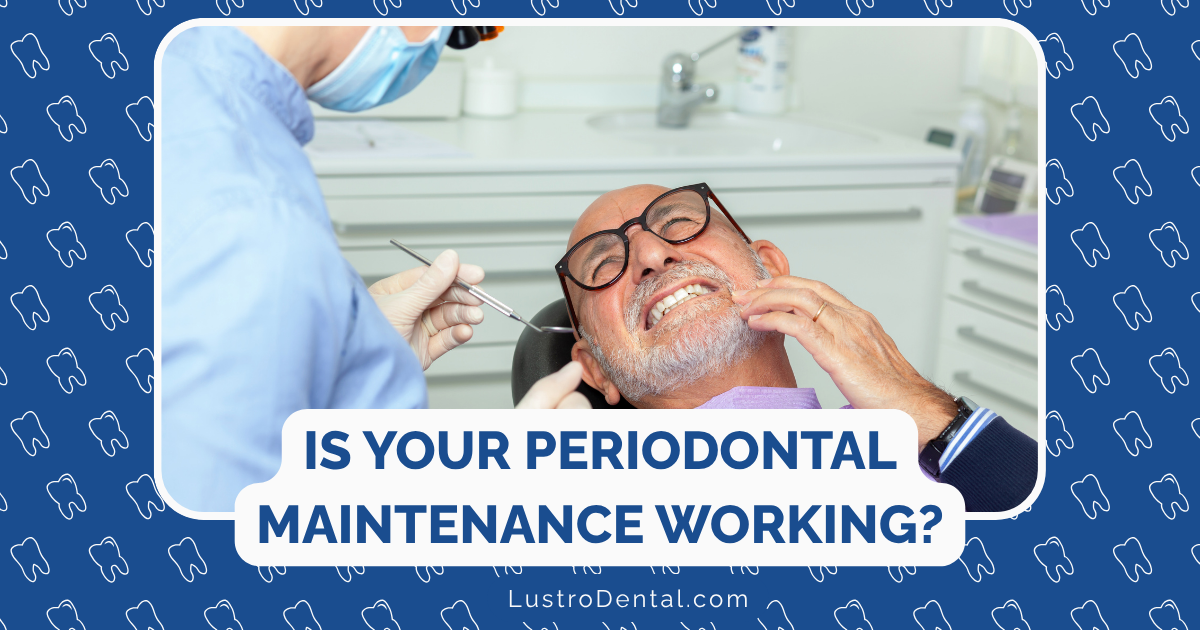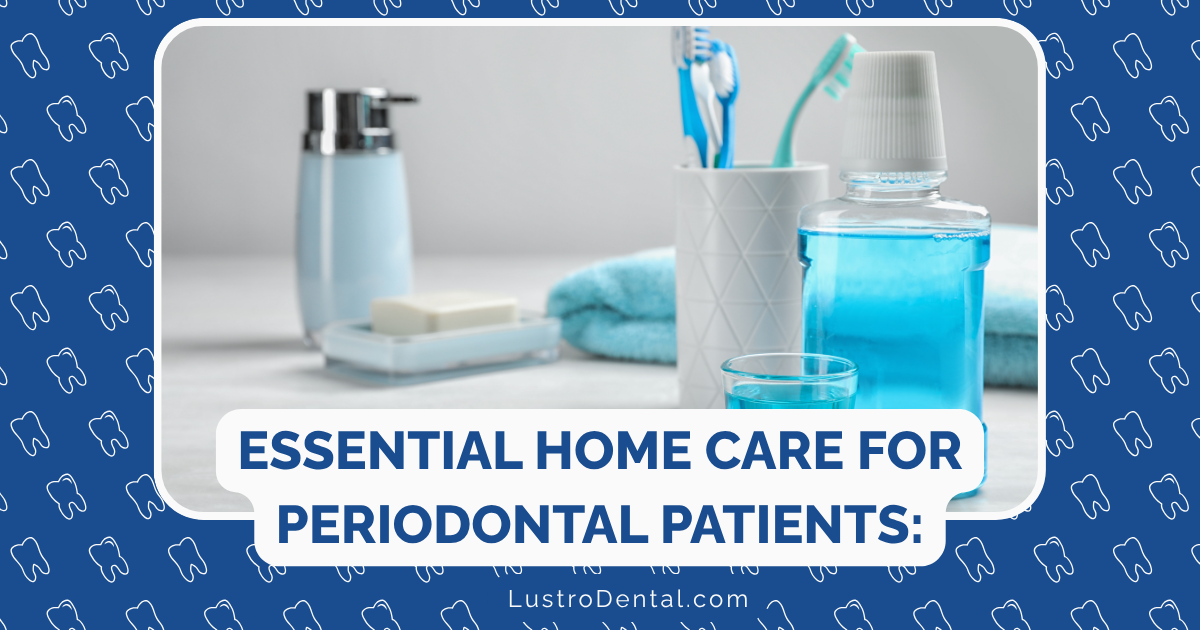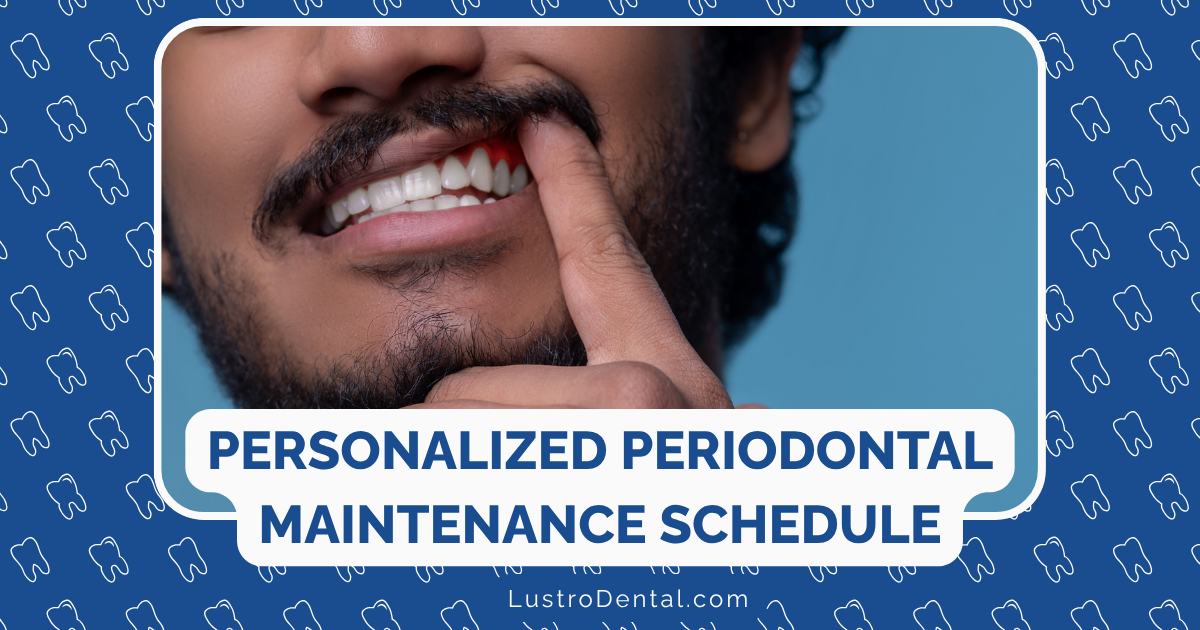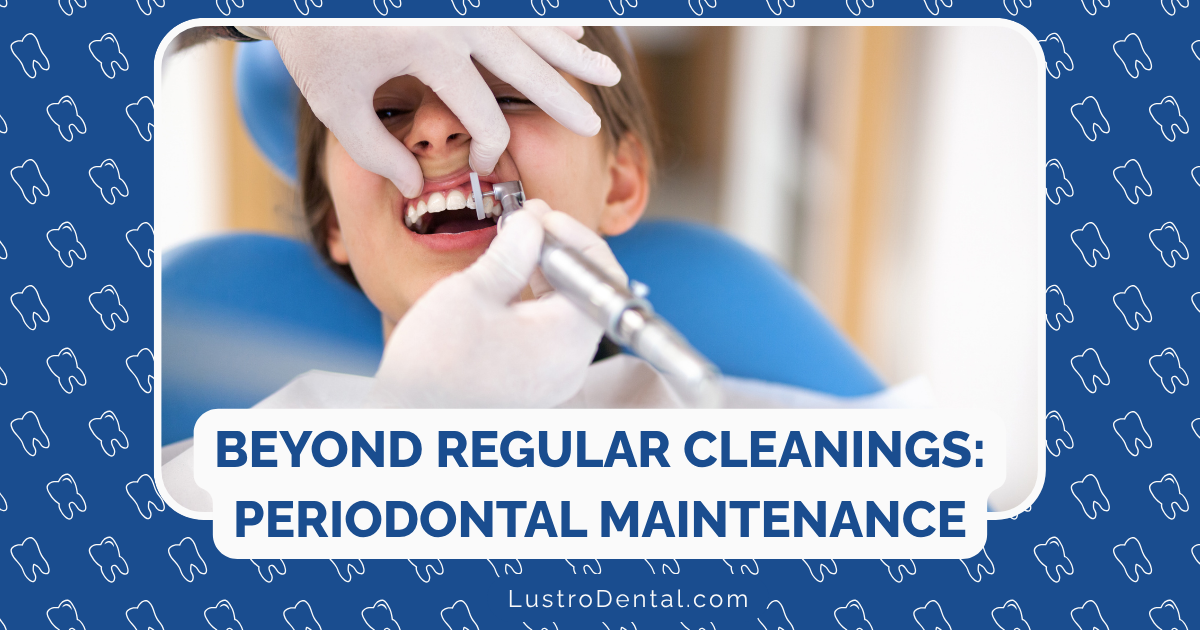Periodontal Maintenance vs. Regular Cleanings: Understanding the Difference
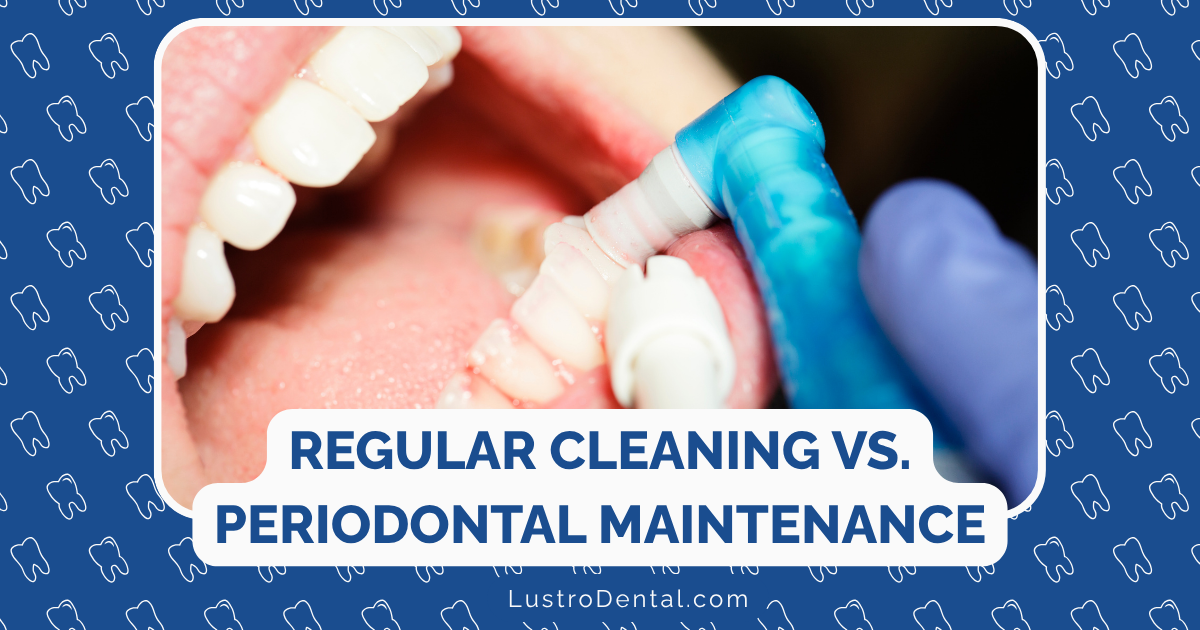
When you schedule a dental cleaning, you might assume all cleanings are created equal. However, there’s a significant difference between a regular cleaning (prophylaxis) and periodontal maintenance—a distinction that matters for both your oral health and your wallet.
As someone who’s worked with countless patients navigating these different types of care, I’ve seen the confusion firsthand. Many patients don’t understand why they’ve been scheduled for periodontal maintenance instead of their usual cleaning, or why the cost and frequency have changed.
In this article, I’ll break down the key differences between regular cleanings and periodontal maintenance, helping you understand which one you need and why it matters for your long-term oral health.
The Fundamental Distinction: Prevention vs. Treatment
The most important difference between regular cleanings and periodontal maintenance lies in their purpose:
Regular Cleaning (Prophylaxis)
A regular cleaning, known in dental terminology as “prophylaxis” or “prophy” (dental code D1110), is a preventive procedure designed for patients with healthy gums and no bone loss. The word “prophylaxis” comes from Greek, meaning “to guard or prevent beforehand.”
Dr. Michael Wilson, periodontist at Mayo Clinic, explains: “Prophylaxis is truly preventive in nature—it’s intended to maintain already-healthy tissues and prevent disease from developing in the first place.”
Periodontal Maintenance
Periodontal maintenance (dental code D4910), on the other hand, is a therapeutic procedure designed for patients who have been treated for periodontal (gum) disease. It’s not preventive—it’s ongoing treatment to manage a chronic condition.
According to the American Dental Association, periodontal maintenance is “intended to continue for the life of the dentition” following active periodontal therapy.
Who Needs Which Type of Cleaning?
Understanding which type of cleaning you need starts with knowing your periodontal status:
You Need Regular Cleanings (Prophylaxis) If:
- You have no history of periodontal disease
- Your gum pockets measure 1-3mm in depth
- You have no bone loss visible on X-rays
- Your gums don’t bleed or show minimal bleeding during probing
- You have no gum recession or tooth mobility
You Need Periodontal Maintenance If:
- You have a history of periodontal disease
- You’ve previously undergone scaling and root planing (deep cleaning) or periodontal surgery
- You have gum pockets measuring 4mm or deeper
- You have documented bone loss on X-rays
- You have gum recession or exposed root surfaces
- You have areas with persistent inflammation or bleeding
Dr. Sarah Johnson, professor at Columbia University College of Dental Medicine, notes: “Once a patient has been diagnosed with and treated for periodontal disease, they don’t revert to being a prophylaxis patient—even if their condition improves significantly. The disease may be controlled, but the anatomical changes and susceptibility remain.”
Comparing the Procedures: What Happens During Each Type of Cleaning
While both procedures involve cleaning your teeth, there are key differences in their scope, technique, and focus:
Regular Cleaning (Prophylaxis) Procedure
- Medical history review and vital signs check
- Visual examination of the mouth for obvious issues
- Supragingival scaling (removal of plaque and tartar from tooth surfaces above the gumline)
- Minimal subgingival scaling (slight cleaning just below the gumline in healthy sulci)
- Polishing of teeth to remove stains and remaining plaque
- Flossing between teeth
- Fluoride application (optional)
- Basic oral hygiene instruction as needed
A regular cleaning focuses primarily on the crowns of the teeth and just slightly below the gumline, using instruments designed for supragingival (above the gumline) cleaning.
Periodontal Maintenance Procedure
- Comprehensive medical history review with attention to factors affecting periodontal health
- Detailed periodontal evaluation including pocket depth measurements, recession, mobility, furcation involvement, and bleeding assessment
- Thorough supragingival scaling (removal of plaque and tartar from tooth surfaces above the gumline)
- Extensive subgingival scaling (cleaning below the gumline in deeper pockets)
- Root debridement (cleaning of root surfaces exposed by recession)
- Site-specific scaling and root planing as needed for areas showing signs of disease activity
- Polishing of teeth
- Irrigation of pockets with antimicrobial solutions in some cases
- Application of localized antibiotics in persistent deep pockets if needed
- Detailed oral hygiene instruction tailored to the patient’s specific periodontal condition
- Evaluation of risk factors and discussion of their management
Periodontal maintenance requires specialized instruments designed to reach deeper into periodontal pockets and clean root surfaces effectively.
Frequency: How Often Each Type of Cleaning Is Needed
The recommended interval between appointments differs significantly between these two types of cleanings:
Regular Cleaning (Prophylaxis) Frequency
- Typically recommended every 6 months for most patients
- May be recommended every 3-4 months for patients with higher risk factors (like diabetes or smoking) but no periodontal disease
- Insurance typically covers two prophylaxis procedures per calendar year
Periodontal Maintenance Frequency
- Typically recommended every 3-4 months based on research showing bacterial recolonization patterns
- May be recommended every 2 months for high-risk patients or those with aggressive disease
- May eventually extend to every 4-6 months for stable patients after years of successful maintenance
- Insurance coverage varies, but many plans cover up to four periodontal maintenance procedures per calendar year
A study published in the Journal of Dental Research found that patients who received periodontal maintenance every 3 months had significantly better outcomes than those seen less frequently, including less bone loss and fewer lost teeth over time.
The Cost Difference: Why Periodontal Maintenance Is More Expensive
There’s typically a cost difference between these procedures, which reflects their different levels of complexity:
Regular Cleaning (Prophylaxis) Costs
- National average cost: $75-$200 without insurance
- Often covered at 80-100% by dental insurance as a preventive service
- Usually no deductible applies to preventive services
Periodontal Maintenance Costs
- National average cost: $120-$300 without insurance
- Often covered at 50-80% by dental insurance as a basic or periodontal service
- May be subject to a deductible, depending on the insurance plan
According to the Utah Periodontal Institute, the average cost of periodontal maintenance in the United States is approximately $120, excluding prior treatments.
The higher cost reflects the additional time, expertise, and specialized equipment required for periodontal maintenance, as well as its therapeutic (rather than preventive) nature.
Insurance Coding and Coverage: What You Need to Know
Understanding the insurance aspects can help you navigate coverage issues:
Regular Cleaning (Prophylaxis) Insurance Considerations
- Coded as D1110 for adult prophylaxis
- Considered a preventive service
- Usually limited to two per calendar year
- May have restrictions of one per 6 months
- Generally has higher coverage percentage (often 100%)
Periodontal Maintenance Insurance Considerations
- Coded as D4910 for periodontal maintenance
- Considered a periodontal or basic service
- Coverage may be limited to 2-4 per calendar year
- Most insurers require a waiting period of 8-12 weeks after active periodontal therapy before covering D4910
- Some insurers require documentation of prior periodontal therapy in at least two quadrants
- Generally has a lower coverage percentage (often 50-80%)
According to the American Dental Association, it’s important to note that using the wrong code (like billing D1110 for a patient who should receive D4910) can constitute insurance fraud, even if done unintentionally.
Can You Switch Back to Regular Cleanings After Periodontal Treatment?
One of the most common questions patients ask is whether they can eventually “graduate” back to regular cleanings after successful periodontal treatment. The answer is more nuanced than a simple yes or no:
The Clinical Reality
From a strictly clinical perspective, most patients with a history of moderate to severe periodontal disease will need periodontal maintenance indefinitely. This is because:
- Anatomical changes (like deeper pockets and gum recession) remain even after successful treatment
- Bacterial susceptibility often has a genetic component that doesn’t change
- Risk factors may persist throughout life
- Research shows that patients who return to regular prophylaxis schedules have higher rates of disease recurrence
Possible Exceptions
In some limited cases, patients might be able to return to prophylaxis if:
- They had only mild, localized periodontal disease
- They’ve maintained perfect stability for several years
- They have excellent home care
- They have minimal remaining pocket depths (all 3mm or less)
- They have no bleeding on probing
- They have no other risk factors
Dr. Lisa Martinez, periodontist at University of California, San Francisco, cautions: “The decision to move a patient from periodontal maintenance back to prophylaxis should be made very carefully, with thorough documentation of sustained periodontal health. In my experience, this transition is appropriate for only a small percentage of periodontal patients.”
The Importance of Proper Maintenance: Why It Matters
Understanding the difference between these procedures isn’t just about semantics—it directly impacts your oral and overall health:
Consequences of Inadequate Maintenance
Patients with a history of periodontal disease who receive only regular cleanings (or who stretch their periodontal maintenance intervals too far) face increased risks of:
- Disease recurrence and progression
- Additional bone loss around teeth
- Tooth mobility and eventual tooth loss
- Systemic health effects related to periodontal inflammation
- Need for more invasive treatments in the future
Benefits of Appropriate Periodontal Maintenance
Patients who adhere to recommended periodontal maintenance schedules typically experience:
- Stable attachment levels with minimal additional loss
- Reduced inflammation throughout the mouth
- Better control of systemic conditions linked to periodontal health
- Fewer dental emergencies and complications
- Lower lifetime dental costs despite the higher short-term expense
A longitudinal study published in the Journal of Periodontology found that compliant periodontal maintenance patients lost an average of 0.03 teeth per year, while non-compliant patients lost an average of 0.1 to 0.3 teeth per year—a significant difference over a lifetime.
Making the Most of Your Periodontal Maintenance
If you require periodontal maintenance, here are some tips to maximize its benefits:
1. Understand Your Condition
Ask your dental professional to explain your specific periodontal status, including pocket depths, areas of concern, and risk factors. Understanding your condition helps you take ownership of your care.
2. Maintain Excellent Home Care
The success of periodontal maintenance depends largely on what you do between visits:
- Brush thoroughly twice daily
- Clean between teeth daily with floss, interdental brushes, or water flossers
- Consider antimicrobial mouth rinses if recommended
- Address risk factors like smoking or poorly controlled diabetes
3. Never Skip Appointments
Consistency is crucial for periodontal maintenance. Even extending your interval by a month or two can allow disease activity to resume.
4. Communicate About Costs
If financial concerns make it difficult to maintain your recommended schedule:
- Ask about payment plans
- Discuss the possibility of alternating between your general dentist and periodontist
- Consider dental savings plans if your insurance coverage is limited
- Remember that prevention is almost always less expensive than treating advancing disease
The Bottom Line: Different Needs, Different Care
The distinction between regular cleanings and periodontal maintenance isn’t about dental offices trying to increase revenue—it’s about providing the appropriate level of care for different oral health conditions.
Just as a person with diabetes requires different medical care than someone without diabetes, a person with a history of periodontal disease requires different dental care than someone with healthy gums. Recognizing and respecting this difference is essential for maintaining not just your oral health, but your overall wellbeing.
By understanding which type of cleaning you need and why, you can make informed decisions about your dental care and work effectively with your dental team to achieve the best possible outcomes for your smile.


